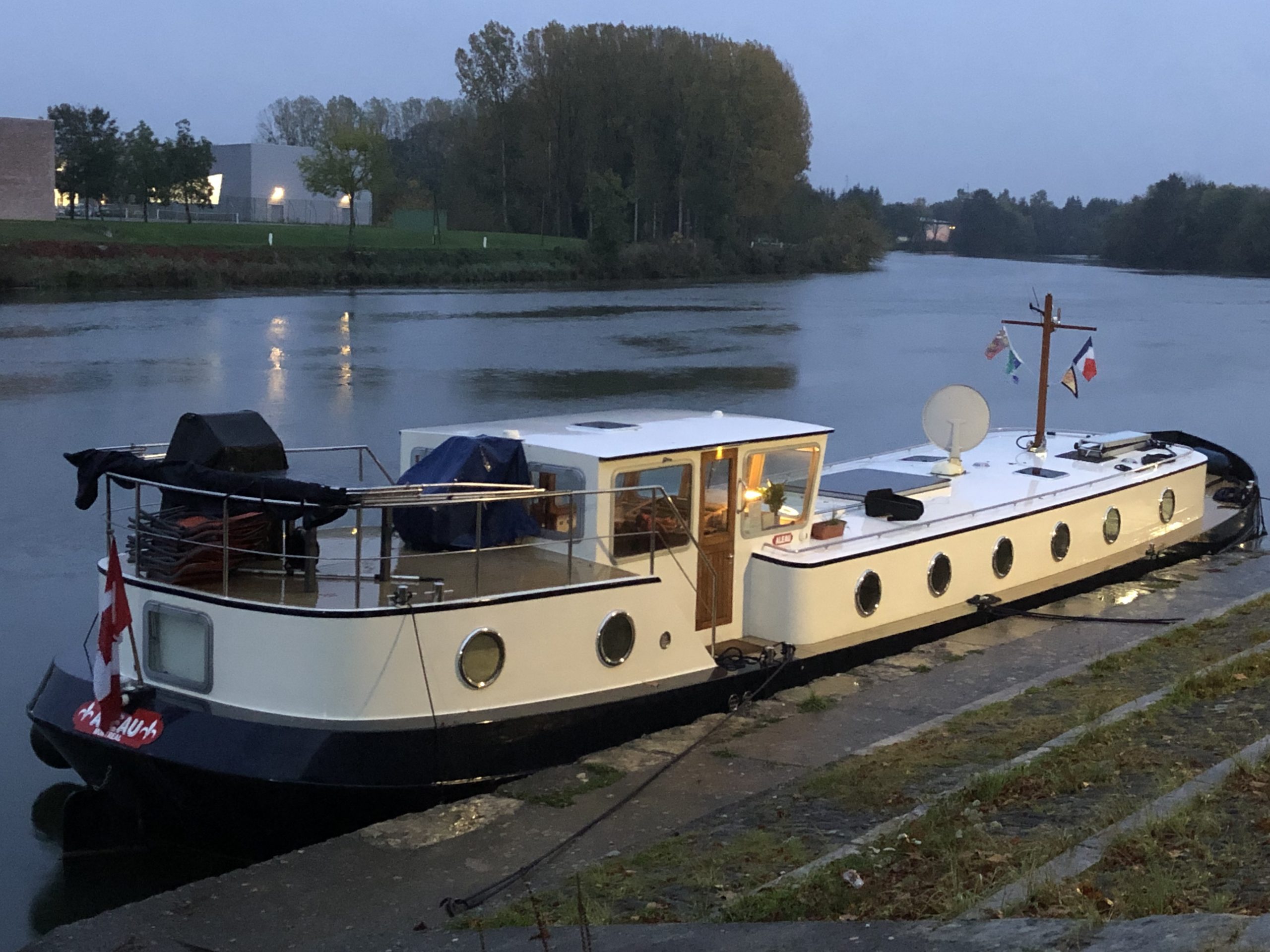The men and women of the VNF are wonderful. On a number of occasions, we have arrived at a lock to find the lights out. We at least want to see a red light. We know we’ll have to wait a bit for a green – but at least we know the lock is operating. When we see nothing lit, we call the VNF. Every time, within minutes, a VNF van roars up. The canals are long, with many locks, often in very rural areas of France. But in an instant, someone from the VNF is there to help us. How fortunate to have such dedicated workers to help out us bargees.
There is a minor downside to all this help. As we travel, we must keep to a schedule. We must tell the VNF where we will be stopping for lunch and for how long. We must tell them where we’ll be stopping for the night – and what time we’ll be at the next lock in the morning. There’s no option to sleep in once we’ve informed them.
That changed once we were on the Canal du Loing. We were given this.
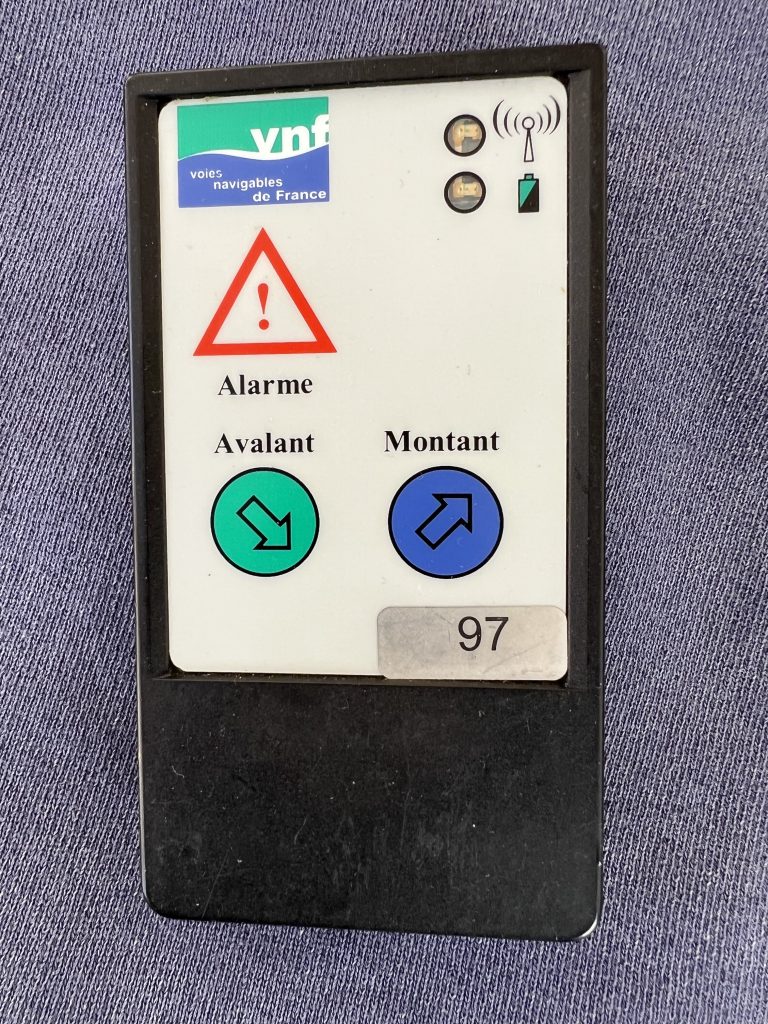
Until now, VNF workers would open and close the lock gates – and open the sluices for us. We still had to handle the ropes. With the remote control pictured above, we do everything. As we approach the lock, one of us pushes a button. Avalant if we’re going downstream and Montant if we’re going upstream. We wait for simultaneous red and green lights to go on. Two together mean ‘stand by’ the lock is being prepared for us. Soon after, the green will remain on as the red disappears. We are cleared to go into the lock.
Once inside and with a rope around a bollard, one of us raises the blue rod. Immediately, the lock gate behind us closes and the lock begins filling (or emptying). When that’s done, a bell rings and the gates in front of us open.
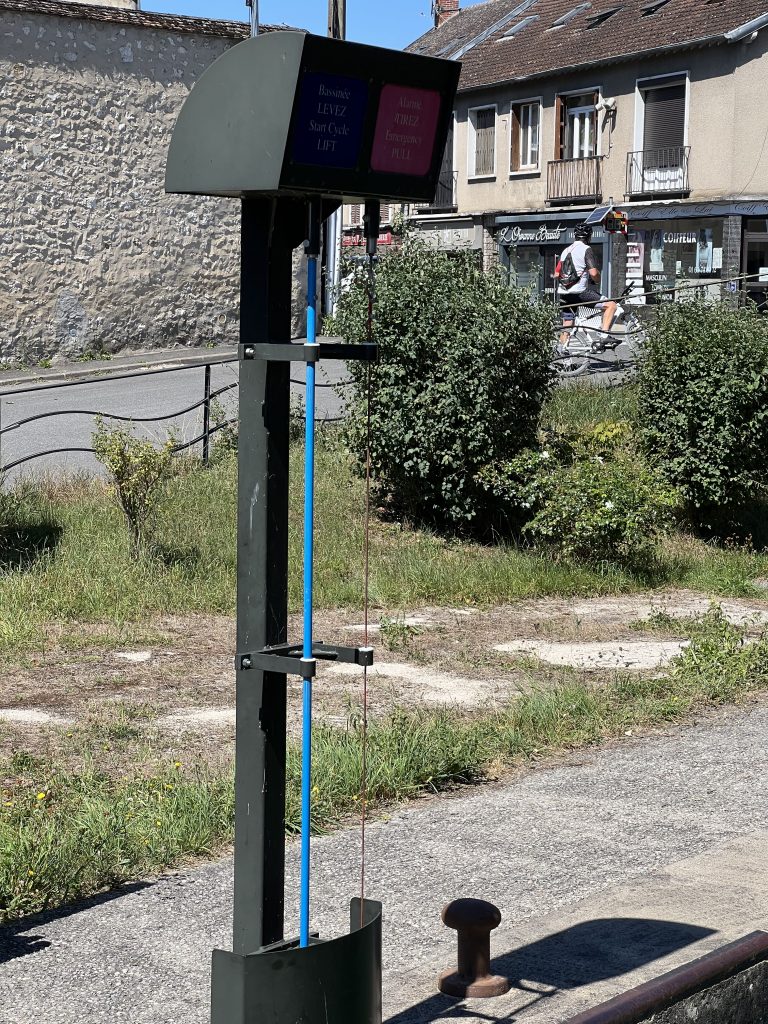
When the VNF were operating the locks for us, we could only pass through from 9am to 7pm – and had to remember the locks are closed from noon to 1pm. Now that we had the remote control, we had more control of how much time we spent on the canals. The locks were now open from 7am to 7pm and didn’t close for lunch. We could cover more ground (or water). If we had the strength.
This is what we see as we approach a lock. Sometimes, they are many kilometres apart. Or it could be just a fraction of a kilometre to the next one.
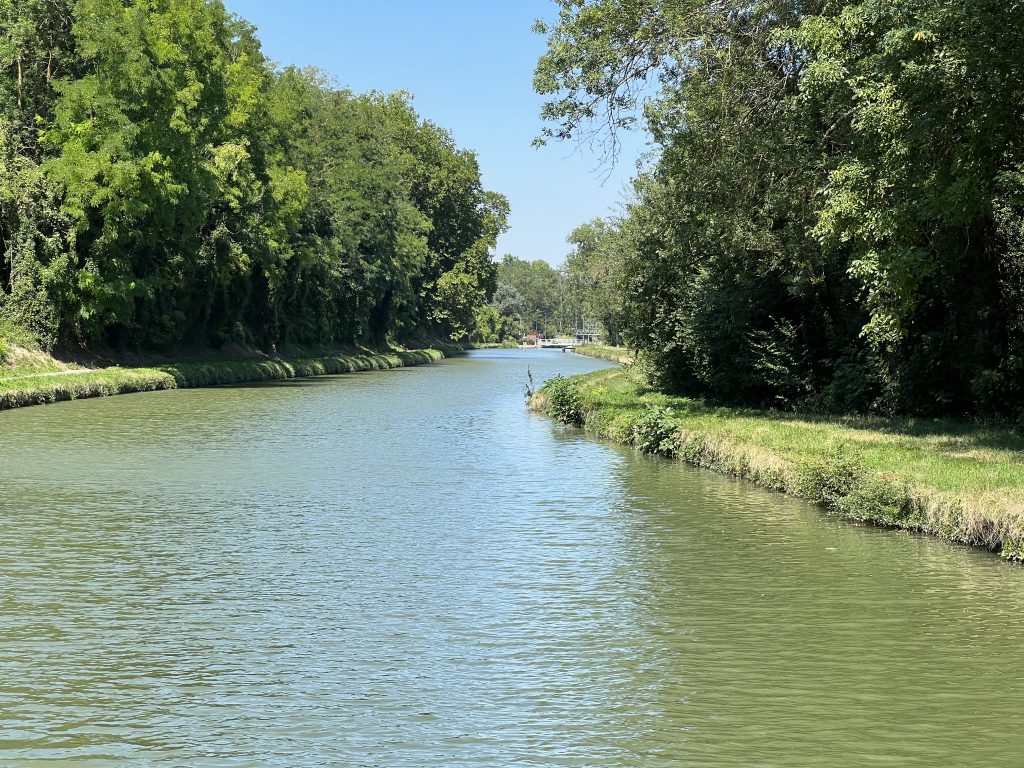
Below, you can see both the red and green are on. We wait as the lock is prepared for us. Filling if we’re going downstream (Avalant) or emptying if we’re going upstream (Montant). In Cepoy, the Canal du Loing goes through the centre of town.
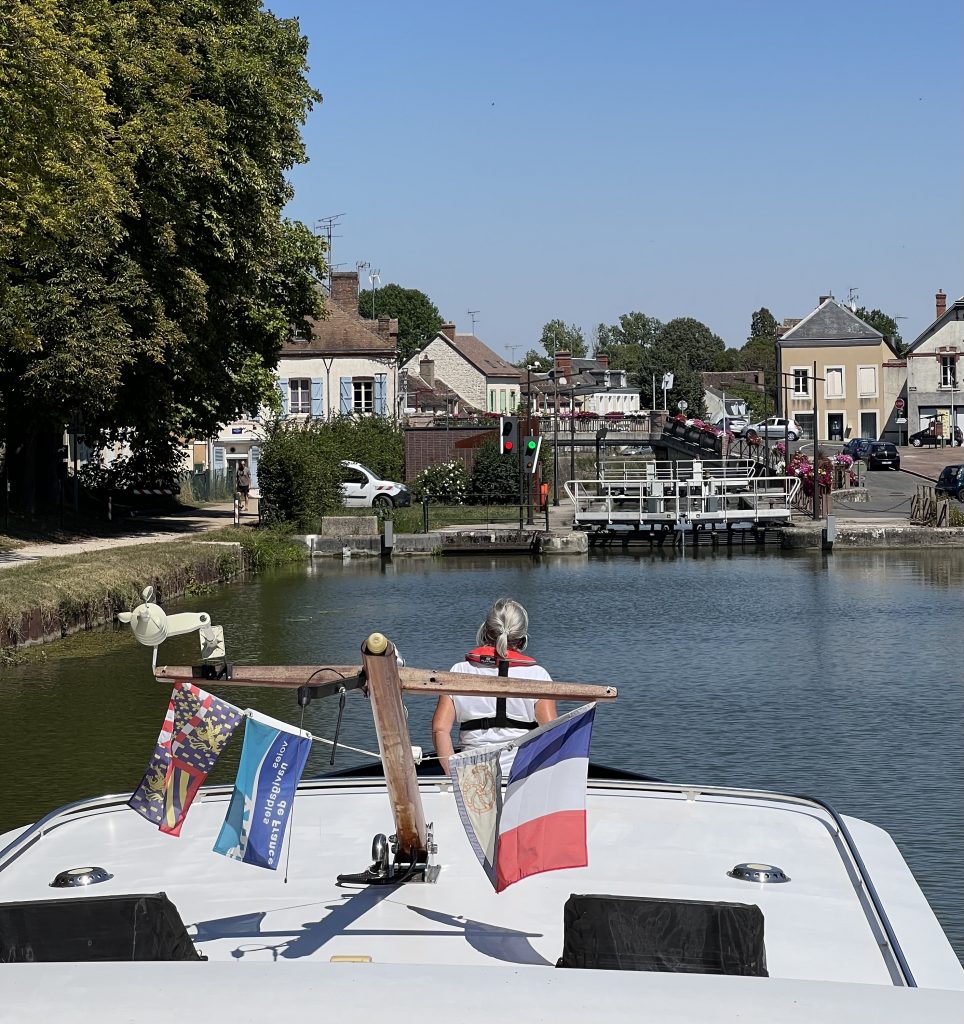
The drought and fear of canal closures has created an exodus. It seems everyone is rushing to get off the canals. When it came time to stop for the day, every mooring in every town was already taken. No problem. We have a generator and enough water to last us. We found a lovely, quiet spot to spend the night. At least it had bollards.
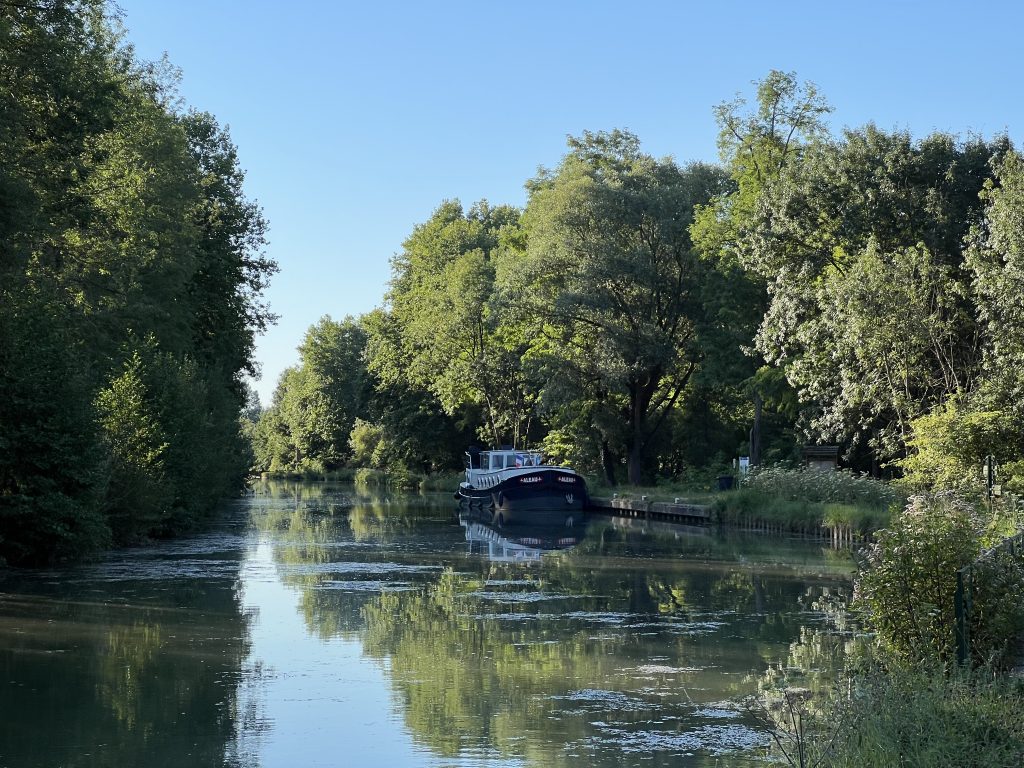
The next morning we were off to Nemours. Same problem. Not a mooring space to be had. We had to press on.
We found another lovely spot to spend the night. Or so we thought.

As we approached, we saw another boat was already there – but moored so we couldn’t quite fit in. We asked if they could back up just a bit – and they were more than happy to do so. We have found almost everyone on the water willing to help out a fellow boater. Here, Sabai-Sabai has made room for us.
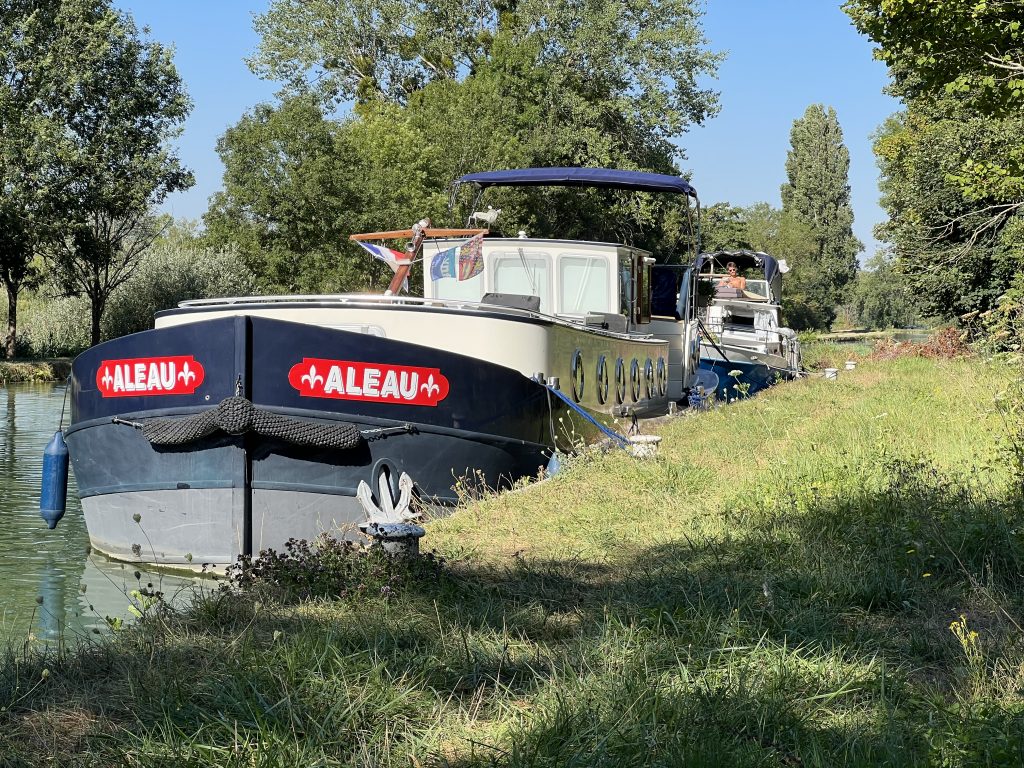
We spent a lovely evening with the helm and crew of Sabai-Sabai – Willy and his father Antoine.
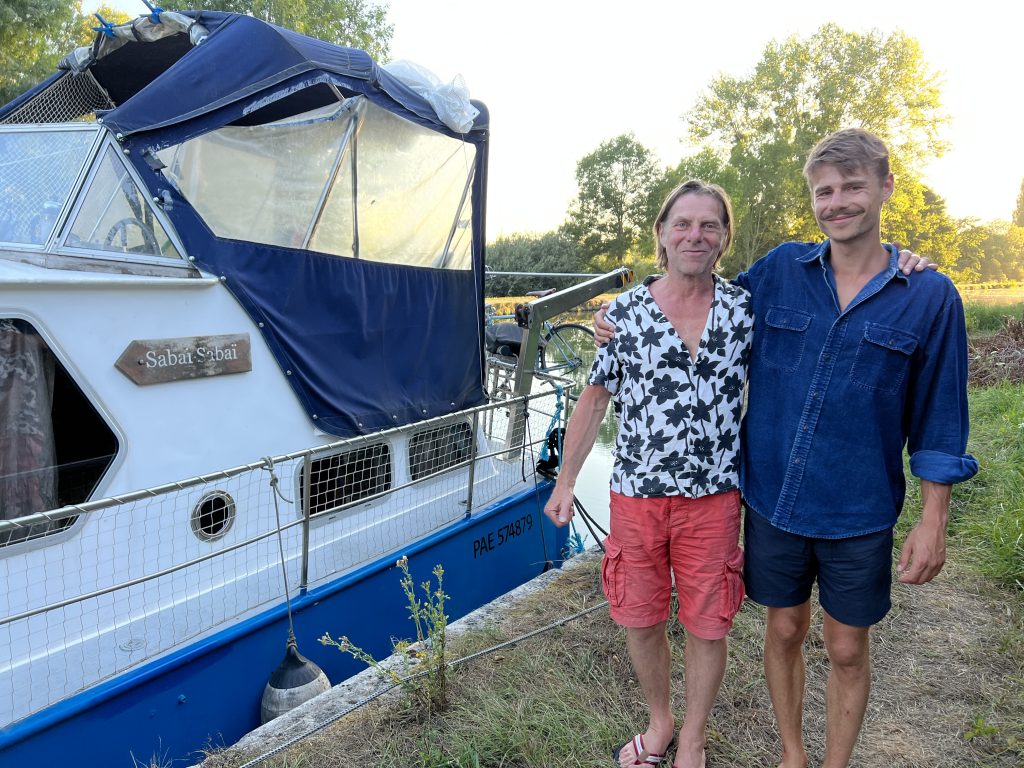
While Willy, Antoine, Jeannie, and I were having dinner on our aft-deck, Willy’s cat explored as much of Aleau as she could.
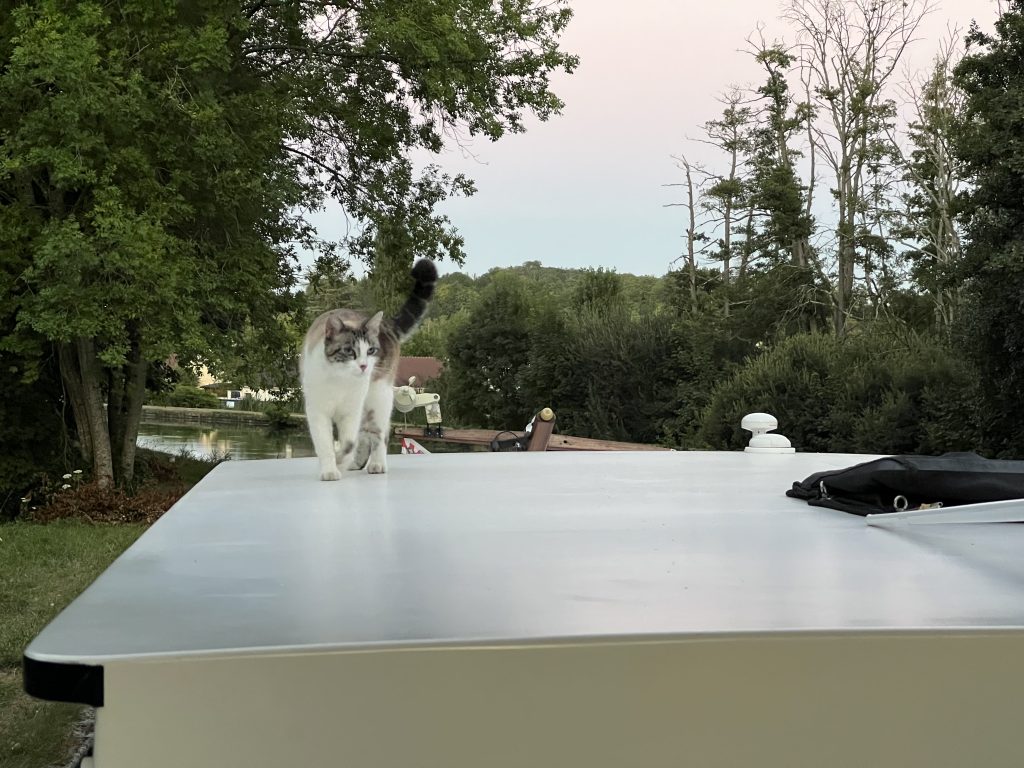
Willy lives year-round on his boat. In Paris. We will be neighbours at Arsenal.
In the morning, we left Sabai-Sabai behind and headed off to Moret-sur-Loing.
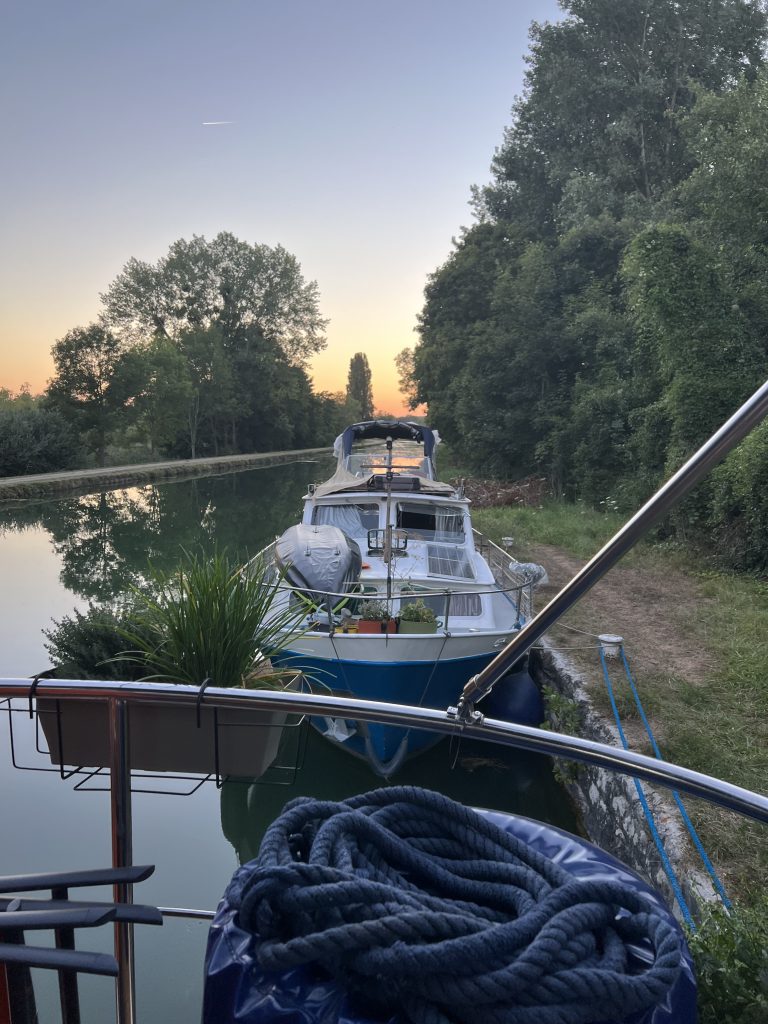
It’s at the end of the Canal du Loing and a town we hoped to stay in for a few days.
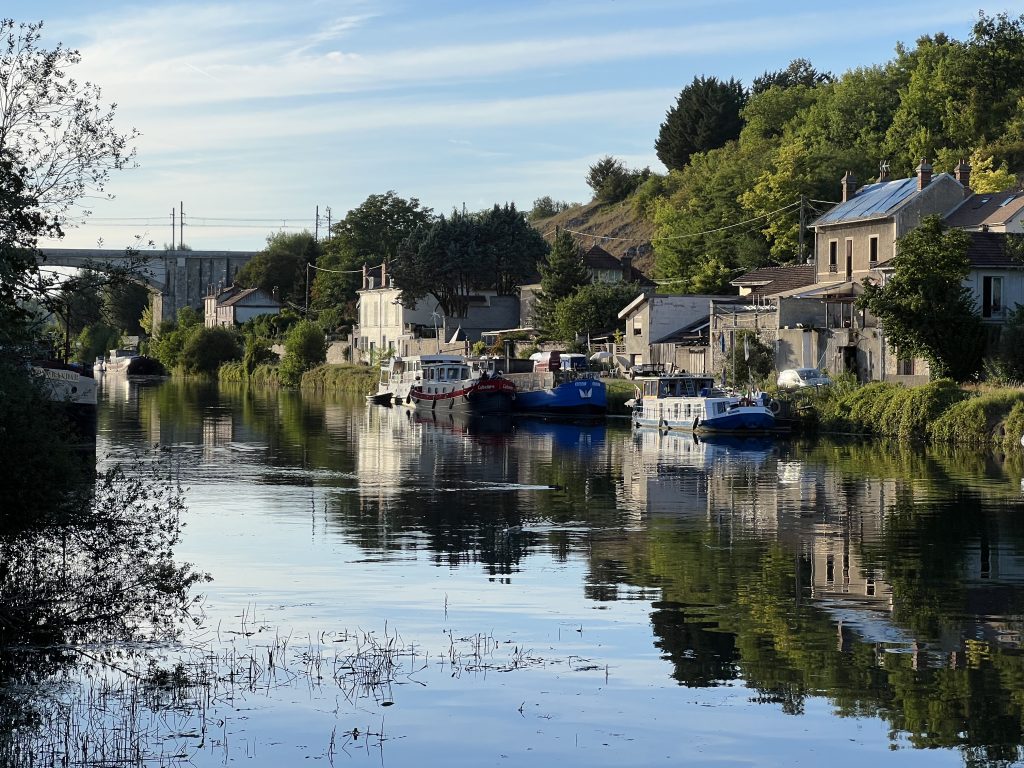
It was with a sense of satisfaction that we turned around and looked at the last lock on the Canal du Loing.
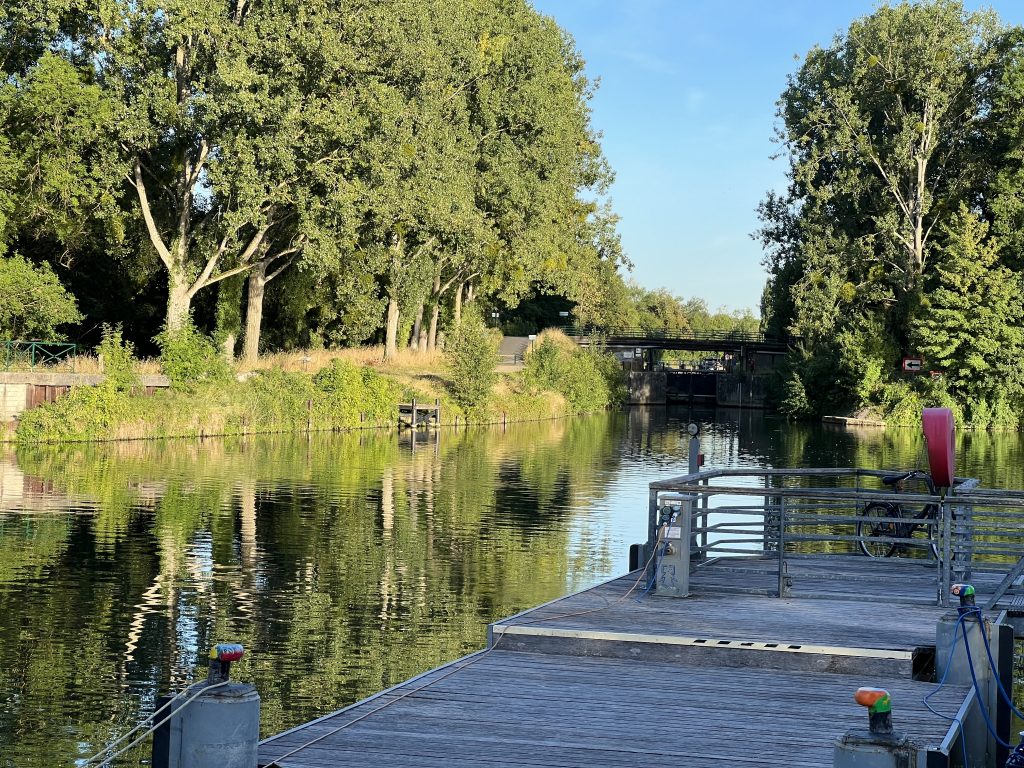
We have competed our voyage to the Seine. (It lies just a few hundred metres in front of us – with no locks to pass through.) We have covered more than 575 kilometres and passed through 169 locks. It has taken us 66 days – although some of those were spent in Nevers waiting for a part – and a few days were spent simply recuperating after some very long days.
We look forward to another few days of (relative) relaxation as we explore Moret-sur-Loing.
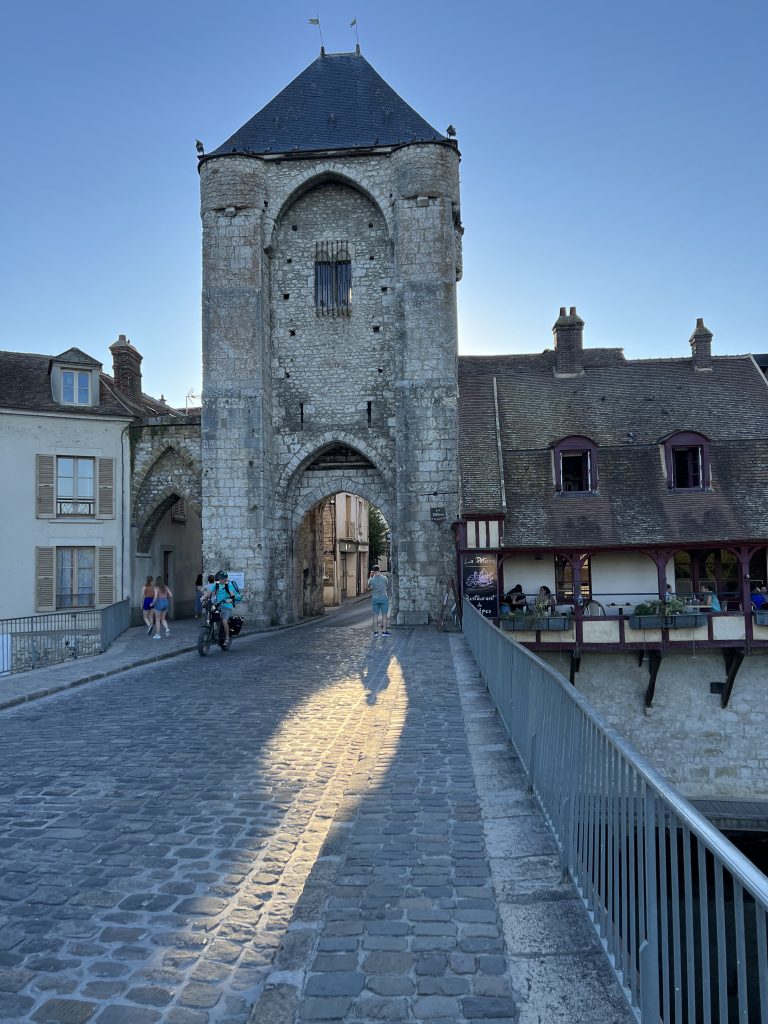
The Porte de Bourgogne was built at the end of the 12th century. Back then, it was a fortification. Today, it houses “La Poterne,” the crèperie where we had dinner our first night in Moret-sur-Loing.
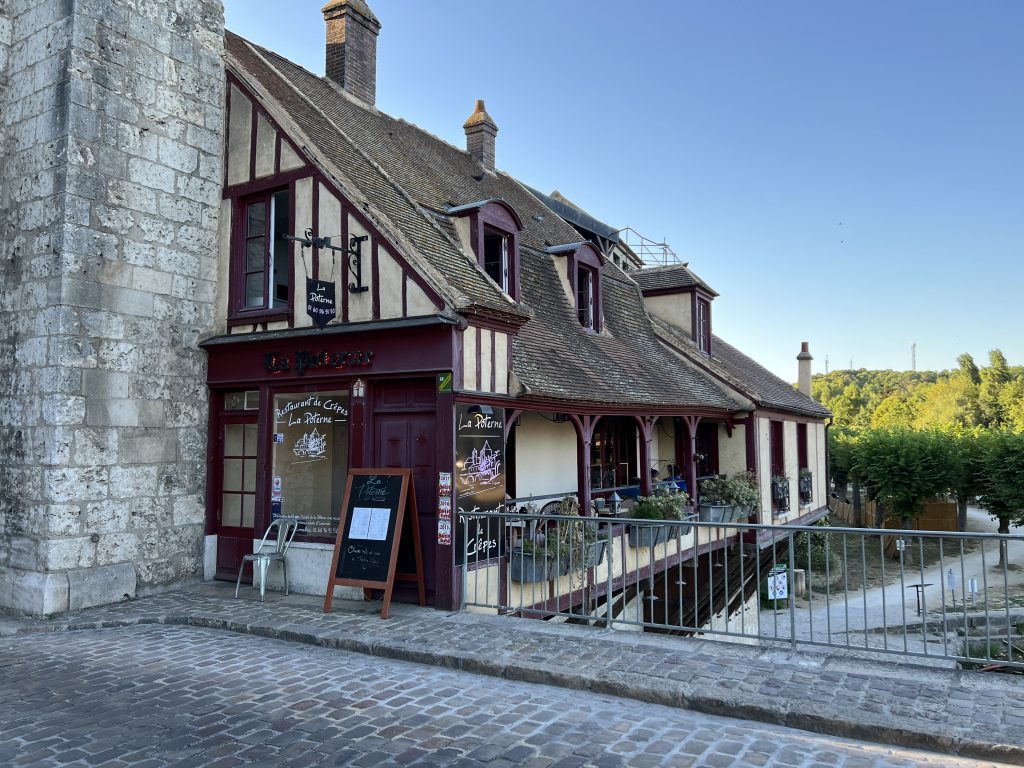
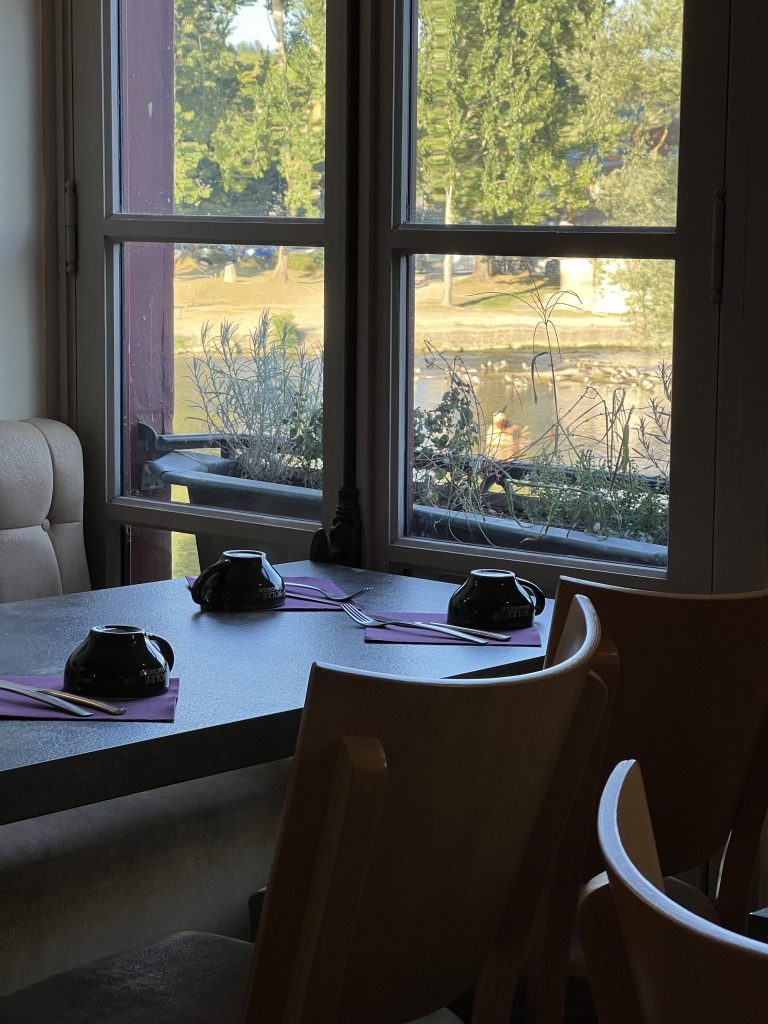
Jeannie chose “La Basquaise” – “Poêlées de Légumes Façon Basquaise, Poulet Grillé, Oignons Confits, Agrémenté d’Emmental et Jambon de Pays”
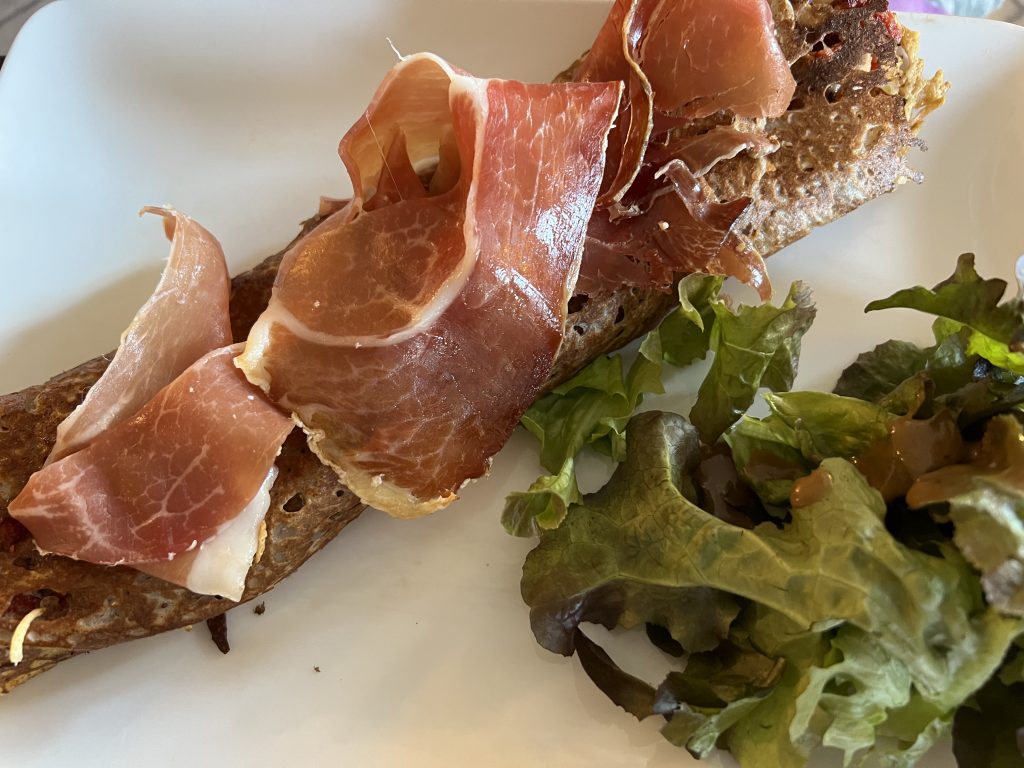
I had “La Reine” – “Jambon Grillé, Lardons Fumés, Poêlée de Champignons et Oignons Confits à la Sauce Tomate Agrémentée d’Emmental et un Oeuf.” Although I had it without the cheese. I’m worried that if I say “No cheese” too many times, they may kick me out of France.
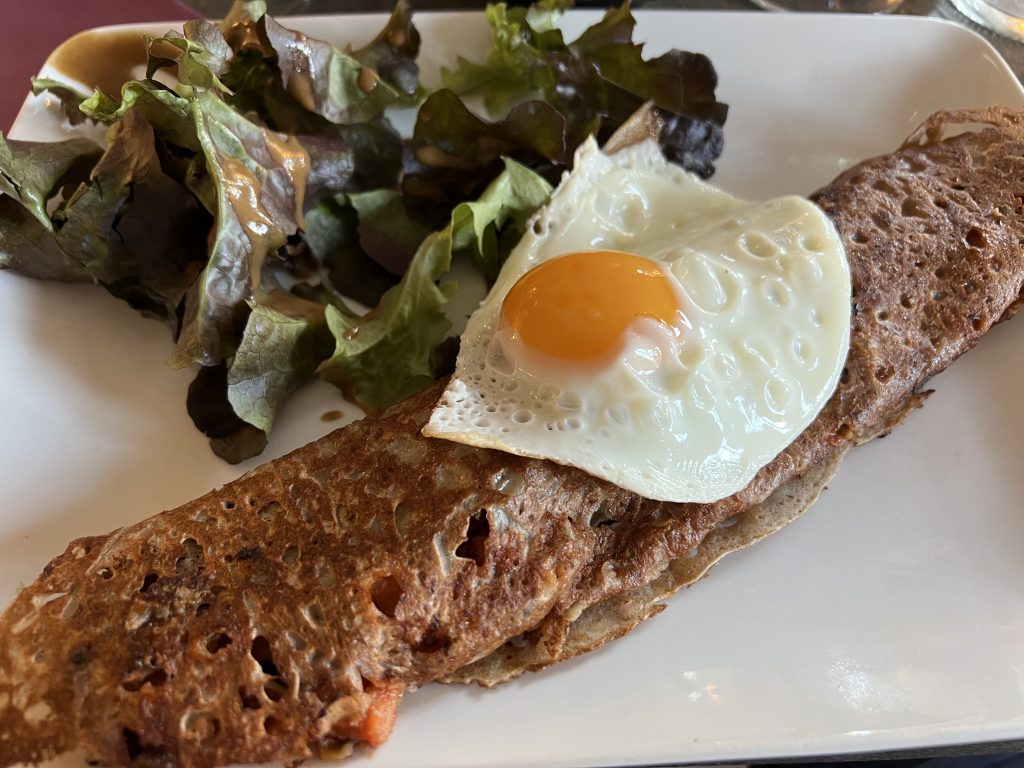
After dinner, it was time for a walk through town. With the sun slowly setting, some buildings were in shade while others basked in the slowly disappearing daylight.
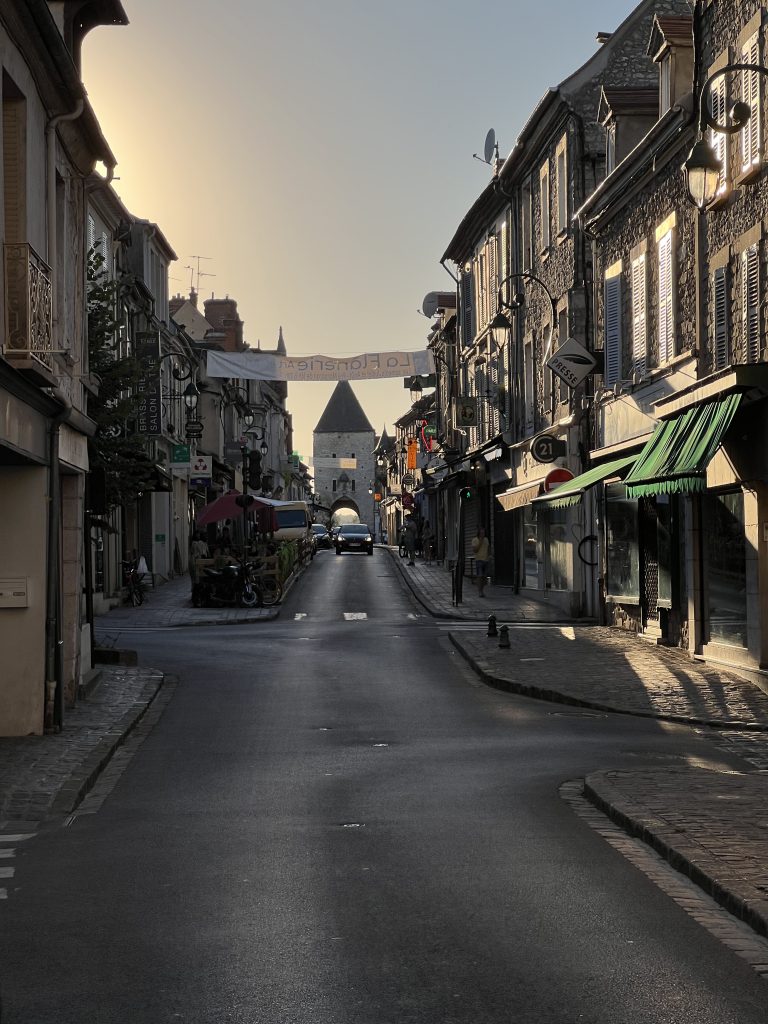
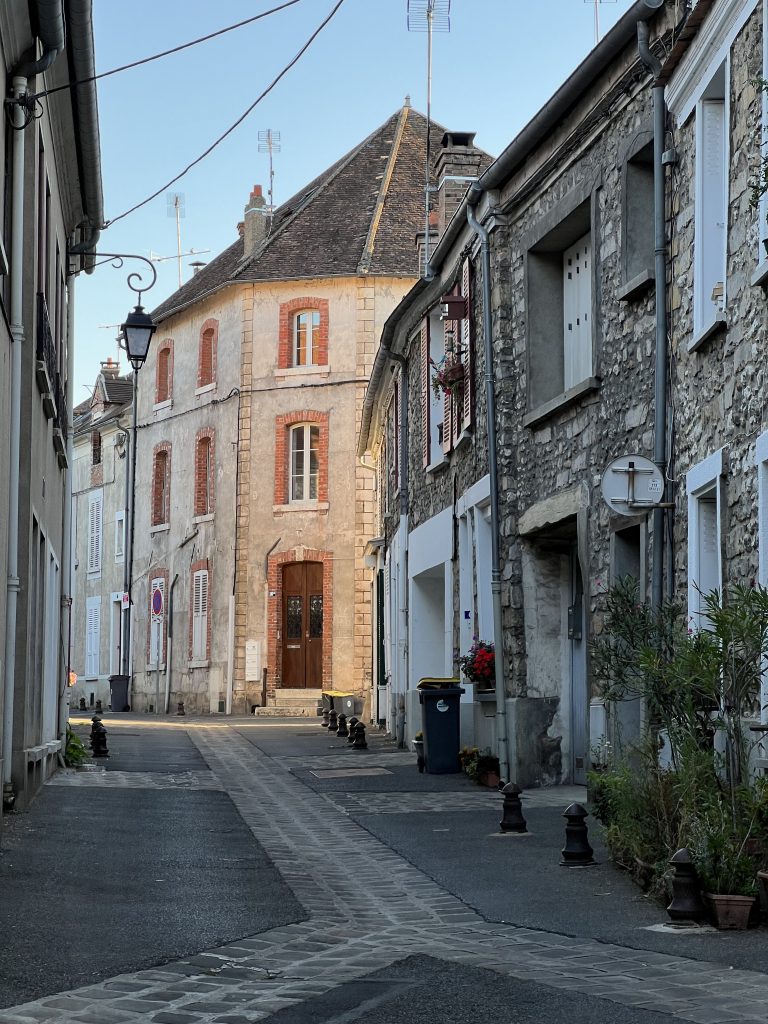
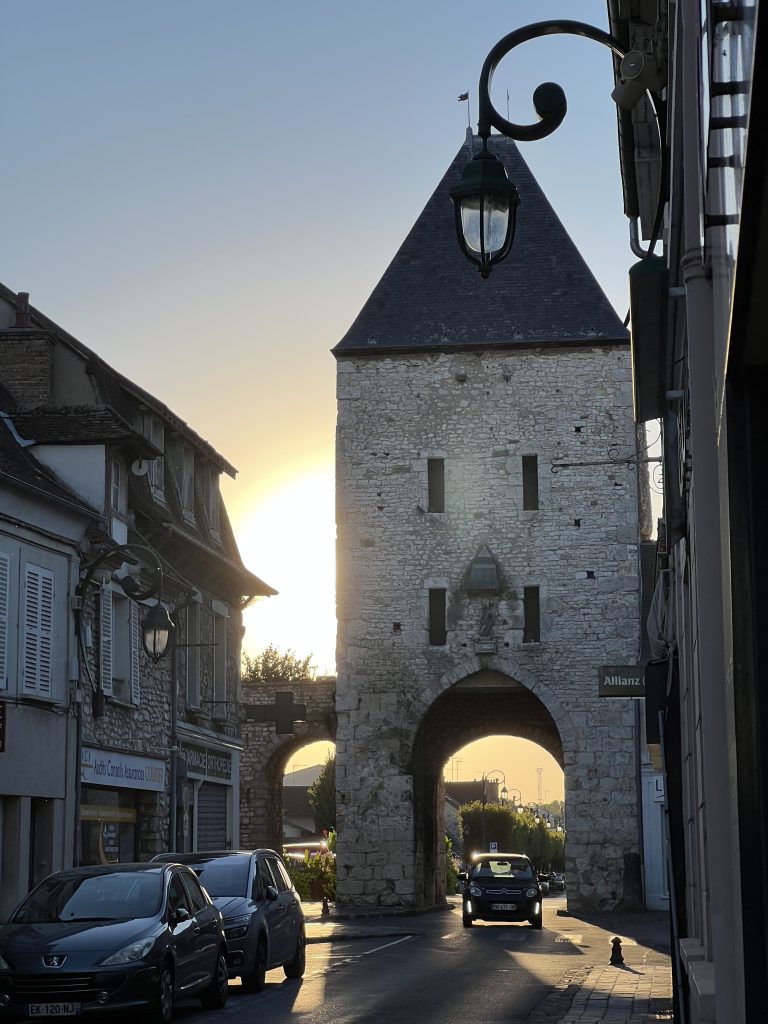
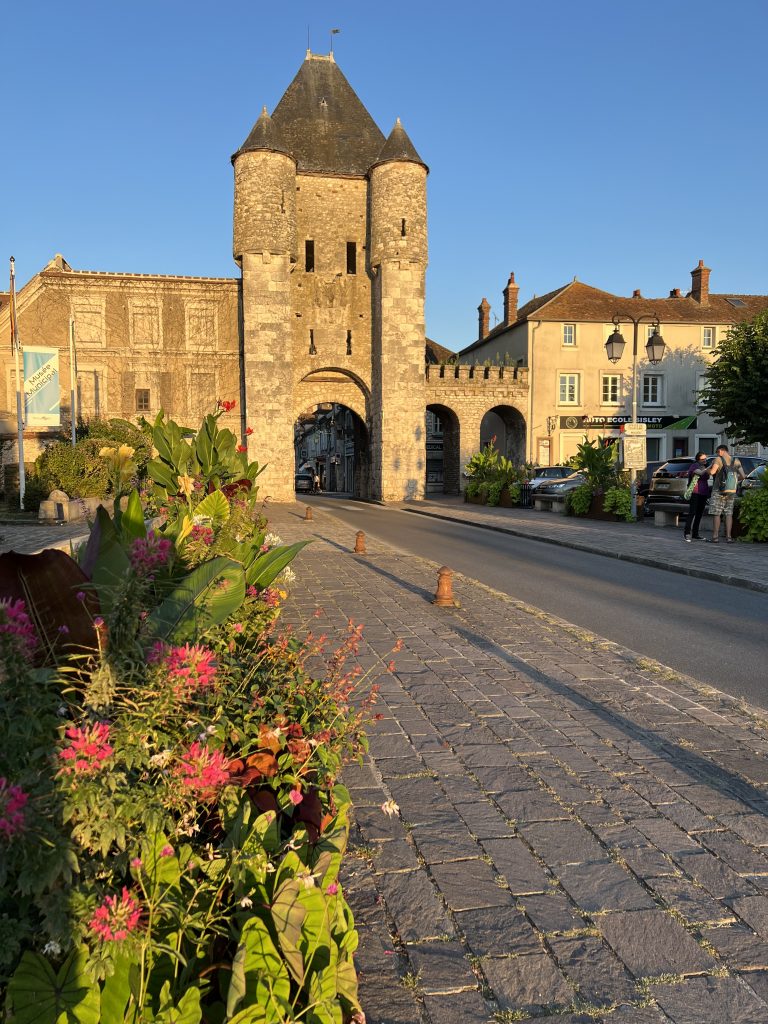
We started our stay on one side of the pontoon – and were later told we had to move to the other (weed infested) side. A hotel barge would be taking our spot.
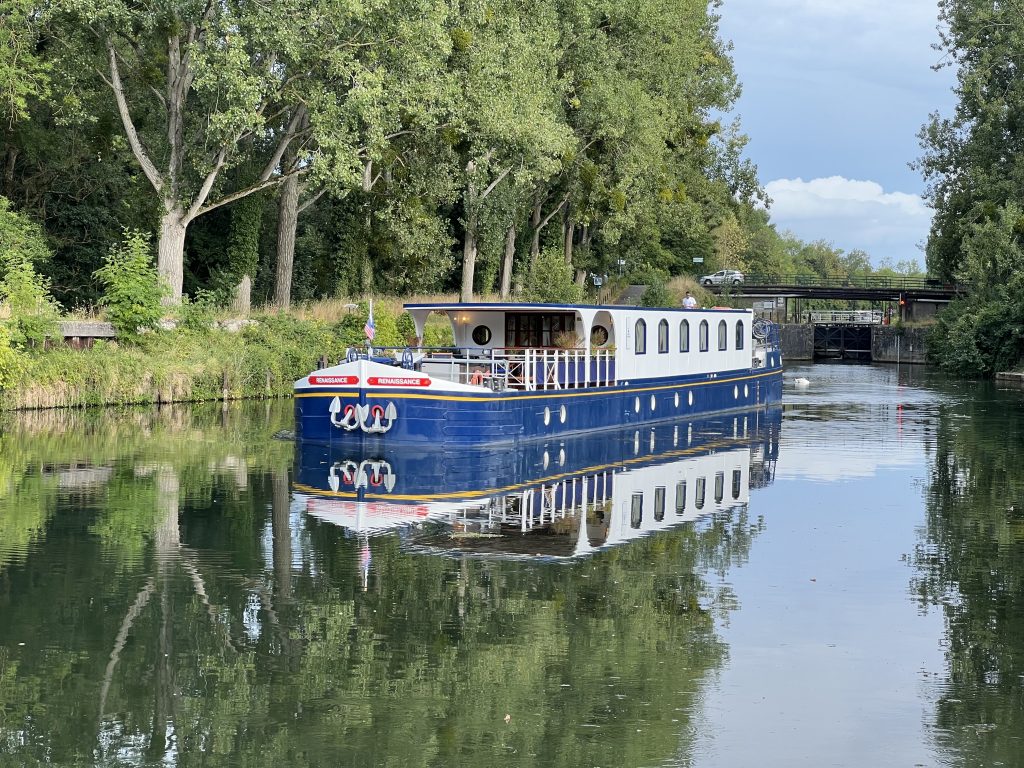
It took a long time to manoeuvre and finally tie up across from us. Nothing in barging happens quickly.
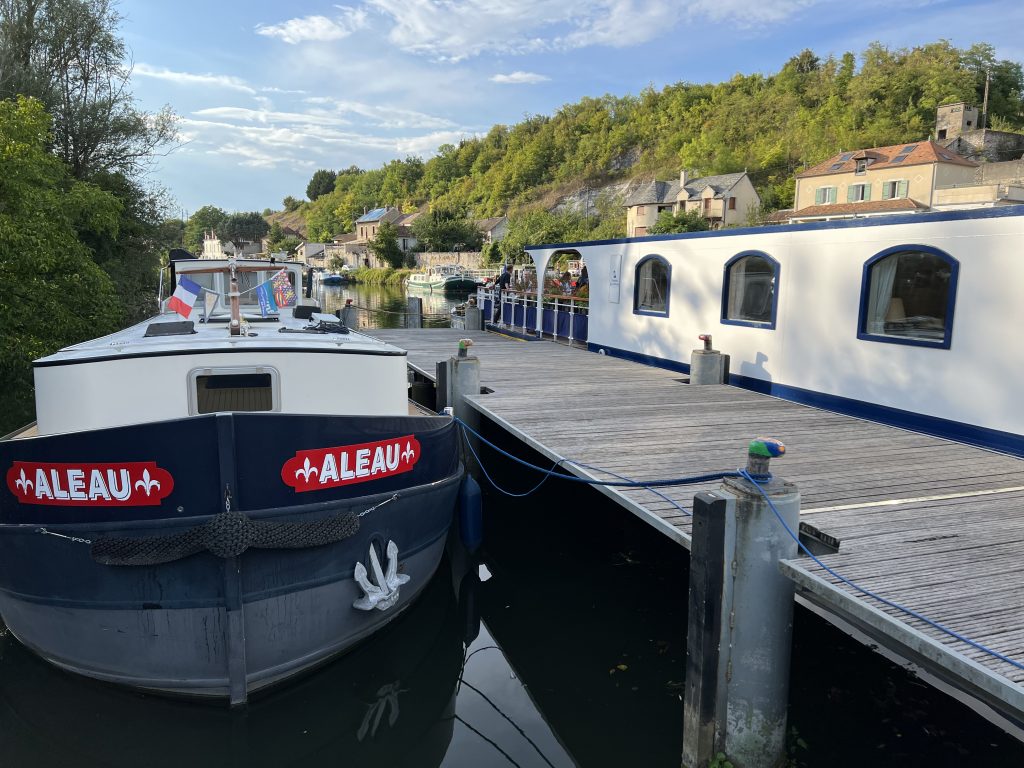
We are lucky. We have made it to the Seine. The drought and subsequent low water levels mean many others have been unable to make it to their destination.
This retired couple from Sweden don’t know what they’re going to do.
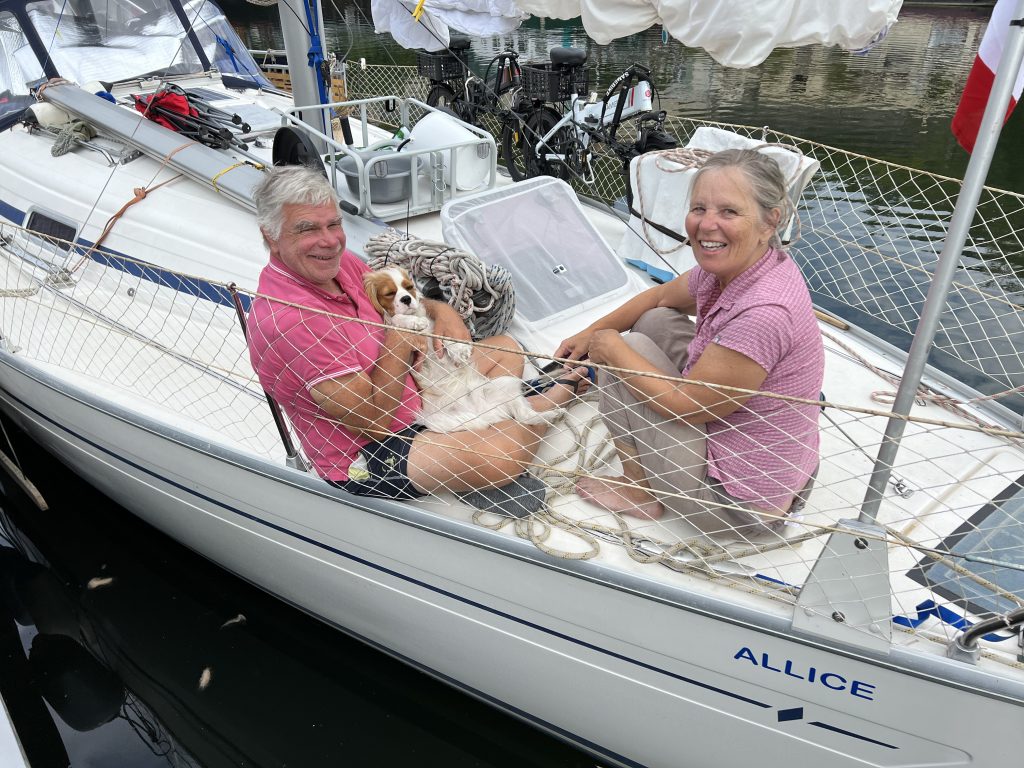
They bought this sailboat last year – to live their dream – to travel this year to the Mediterranean. To the Riviera, to Spain, to Italy, to Greece…
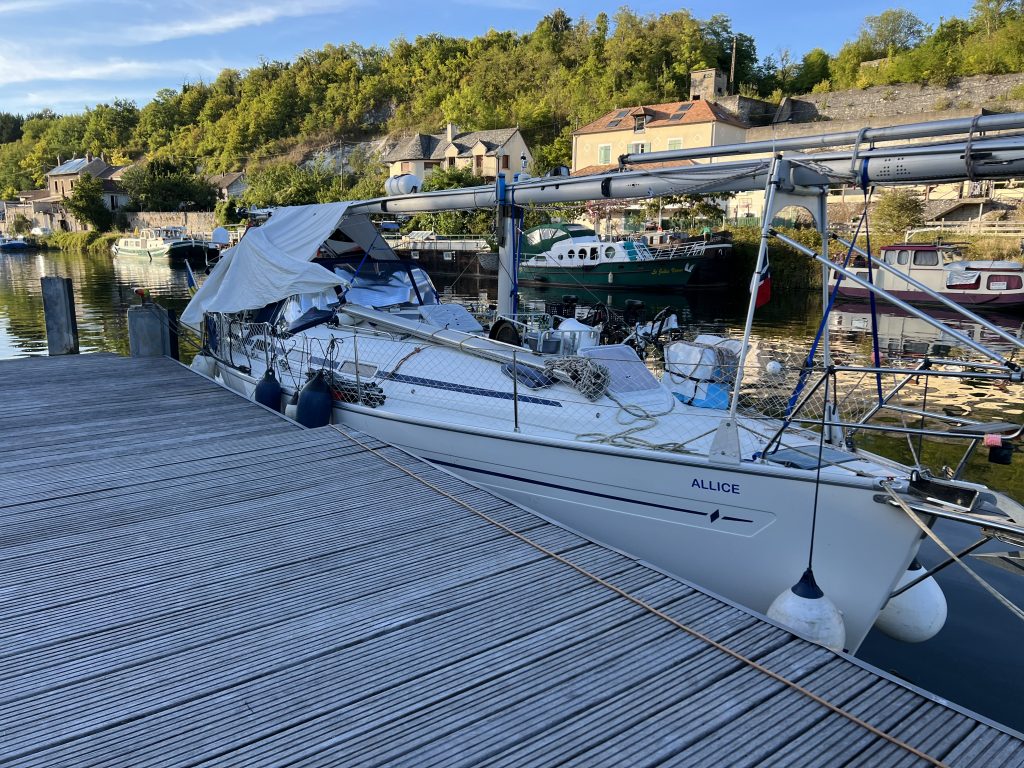
They left Sweden in June and were taking the route we took to get here – but in the opposite direction. Then they were told they had to turn around and get off the canal. They did 124 locks in five days rushing to beat the closures. They say they are totally exhausted and can’t go any farther. But they must. They were allowed to stay across from us for one night – but had to leave so the hotel barge could moor.
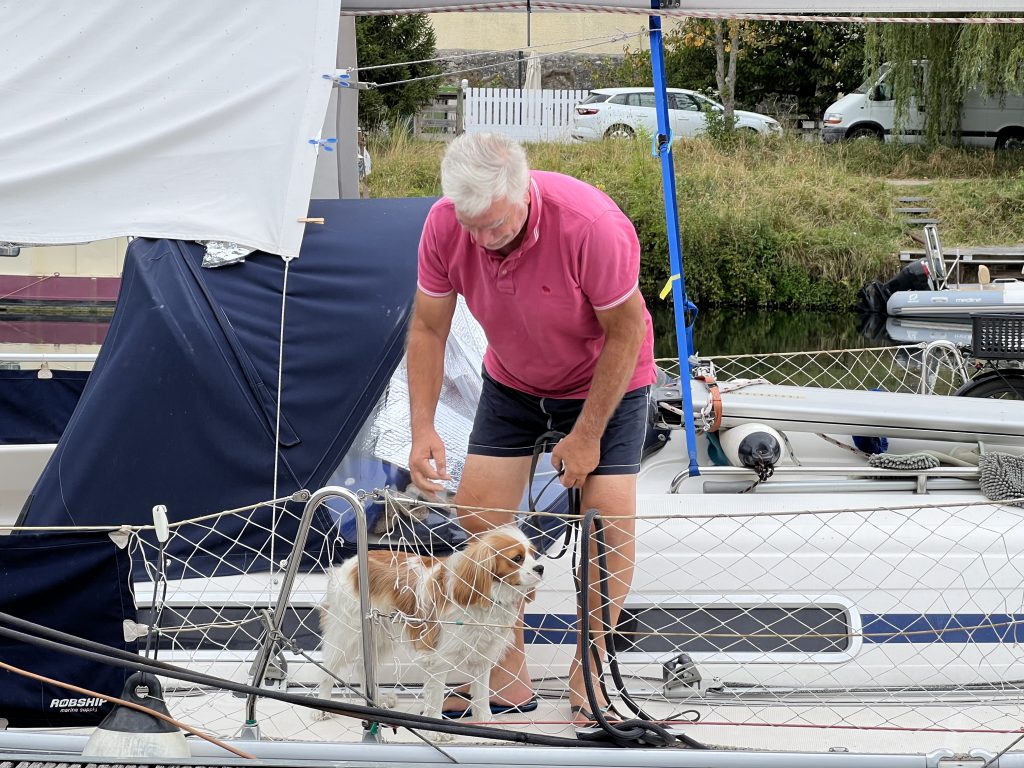
They say they have no idea where they can moor for the winter – in fact, no idea where to go as they leave here. It has been a brutal summer for many people.
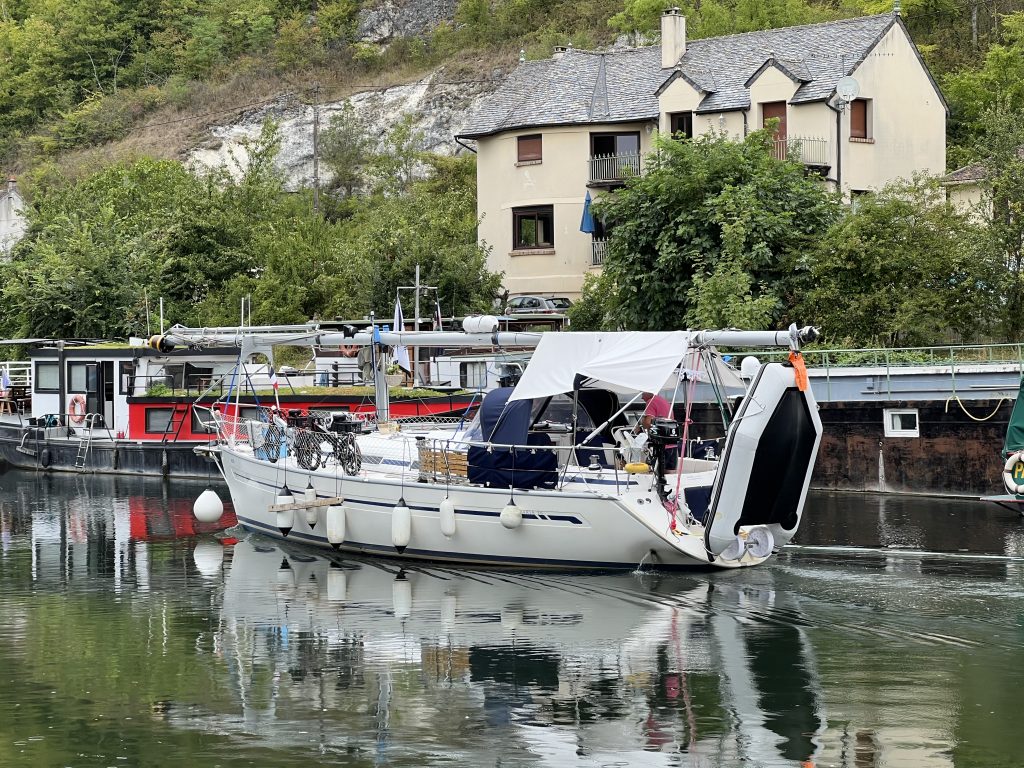
We wished them luck as they left – not knowing where, when, or even if, they will find a mooring.
